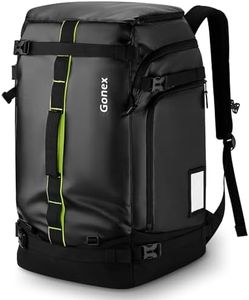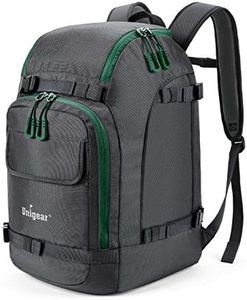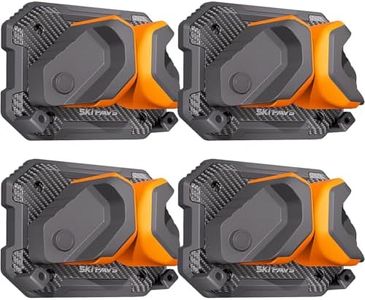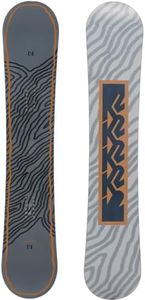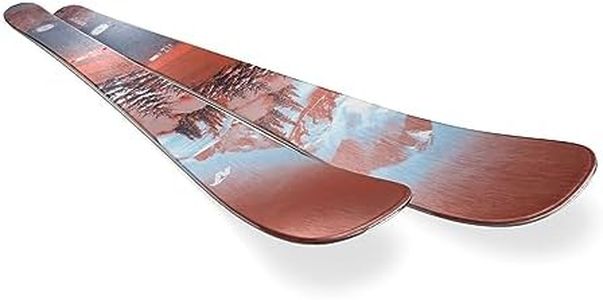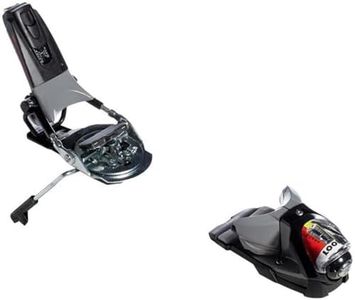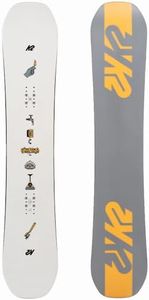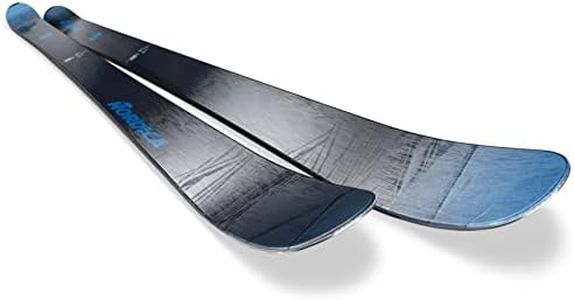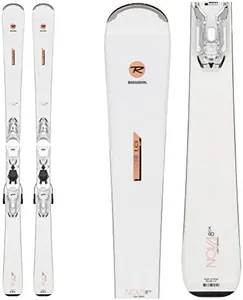We Use CookiesWe use cookies to enhance the security, performance,
functionality and for analytical and promotional activities. By continuing to browse this site you
are agreeing to our privacy policy
10 Best Twin Tip Skis 2025 in the United States
How do we rank products for you?
Our technology thoroughly searches through the online shopping world, reviewing hundreds of sites. We then process and analyze this information, updating in real-time to bring you the latest top-rated products. This way, you always get the best and most current options available.

Buying Guide for the Best Twin Tip Skis
Choosing the right twin-tip skis can significantly enhance your skiing experience, whether you're hitting the park, the backcountry, or just cruising down the slopes. Twin-tip skis are designed with upturned tips at both ends, allowing for easier backward skiing and more versatile tricks. To find the best fit for you, it's important to consider several key specifications that will influence performance, comfort, and suitability for your skiing style and skill level.LengthThe length of twin-tip skis is crucial as it affects stability, control, and maneuverability. Shorter skis (below chin height) are easier to turn and are ideal for beginners or those focusing on tricks and park skiing. Medium-length skis (between chin and nose height) offer a balance of stability and maneuverability, suitable for all-mountain skiing. Longer skis (above nose height) provide more stability at high speeds and are better for advanced skiers or those skiing in deep powder. Choose the length based on your skill level and the type of skiing you plan to do most often.
WidthThe width of the skis, particularly at the waist, affects how they perform in different snow conditions. Narrower skis (under 85mm) are quicker edge-to-edge and perform well on groomed runs and hardpack snow. Medium-width skis (85-100mm) offer versatility, handling both groomed runs and some off-piste conditions. Wider skis (over 100mm) provide better floatation in powder and are ideal for backcountry and deep snow. Consider where you'll be skiing most often to determine the best width for your needs.
FlexFlex refers to how stiff or soft the skis are. Softer flex skis are more forgiving and easier to control, making them suitable for beginners and park skiers who need flexibility for tricks. Medium flex skis offer a balance of performance and versatility, suitable for all-mountain skiing. Stiffer flex skis provide better stability and power at high speeds, ideal for advanced skiers and those skiing on challenging terrain. Your skill level and preferred skiing style should guide your choice of flex.
Camber/Rocker ProfileThe camber/rocker profile describes the shape of the ski when viewed from the side. Traditional camber skis have an arch underfoot, providing good edge hold and stability on groomed runs. Rocker skis have a reverse camber, with tips and tails that rise off the snow, offering better floatation in powder and easier turn initiation. Hybrid profiles combine camber underfoot with rocker at the tips and tails, providing a versatile performance across various conditions. Choose a profile based on the type of terrain you'll be skiing most often.
Sidecut RadiusThe sidecut radius is the measure of the ski's curvature, affecting how easily it turns. A smaller radius (under 16m) means a tighter turn radius, making the skis more agile and easier to maneuver, ideal for park skiing and quick turns. A medium radius (16-20m) offers a balance of agility and stability, suitable for all-mountain skiing. A larger radius (over 20m) provides more stability at high speeds and is better for wide, sweeping turns, ideal for advanced skiers and big mountain terrain. Consider your skiing style and the type of turns you prefer when choosing the sidecut radius.
Most Popular Categories Right Now
